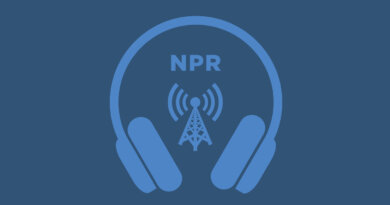Be Wary of Those Racing to Fill the Therapeutic Void
What your doctor is reading on Medscape.com:
MAY 07, 2020 — The sheer speed of spread of the novel coronavirus (COVID-19) and the resultant patient volume leave physicians treating a disease they don’t completely understand. No proven treatment or vaccine is available.
The virus has touched everyone now, through direct infection or its indirect social and economic effects. Physicians, patients, and the general public are desperate for a cure. As a consequence, everyone is racing to fill the therapeutic void.
Crises like the COVID-19 pandemic lend themselves to hyperbole and dogmatism, and both can be harmful. Therapeutic overconfidence creates a strong bias among patients and physicians. Despite our desire for an effective treatment, we have no idea whether anything works.
Making Therapeutic Decisions Despite the Lack of Data
Mainstream medical journals have published reports on drugs in general and specifically remdesivir, convalescent plasma, and lopinavir-ritonavir. Lower-tier journals have accepted poorly written pieces on hydroxychloroquine that instill little confidence. The small numbers, observational nature, and absence of a control group in most treatment studies allow us to conclude, well, nothing. We can probably agree that lopinavir-ritonavir doesn’t work…I think.
In the absence of data, expert opinion often serves as a substitute. Different professional societies have rushed to produce guidelines written by such experts. These aren’t guidelines in the conventional sense; you’re not going to see the GRADE criteria used, and every recommendation is based on opinion extrapolated from non-COVID-19 disease states. This is okay and can be helpful, but unfortunately, recommendations across societies conflict.
A few of the controversial questions, most related to critical care medicine, include:
-
Do we prone our patients early, late, or not at all?
-
Is a high-flow nasal cannula safer and more effective than noninvasive positive pressure ventilation, or will it exhaust the oxygen supply and infect healthcare workers?
-
Do we intubate early or late?
-
What do we do about the profound derangement in coagulation that seems to occur with COVID-19?
-
Should everyone be treated with airway pressure release ventilation (APRV)?
-
If demand for mechanical ventilation outstrips supply, should we support more than one patient using a single ventilator?
Continued
From a more general perspective, there’s the overlying question of whether COVID-19-related comorbidity is unique. For example, does the resulting acute respiratory distress syndrome (ARDS) represent a novel phenotype?
My anecdotal experience has predictably proven to be of little value. I’ve seen several critically ill, intubated COVID-19 patients. Some have lived and others have died. We’ve proned some patients but not others. Some of the patients who are started on oxygen never progress to respiratory failure, whereas others do. One thing that does seem consistent in both the literature and my experience is that when these patients are intubated and develop ARDS, their road to recovery is quite long. Is this so different from non-COVID-19 ARDS? Hard to say.
Remain Suspicious of Those Touting a Particular Therapy
I certainly applaud those who’ve published their COVID-19 clinical data. Since the pandemic reached the United States, I’ve published exactly nothing about the disease, so it’s important not to judge others in a vacuum. The limitations are real, though. I’d advise you to be suspicious of anyone who emphatically supports a particular therapy or treatment modality at this point. Their words may be amplified in the echo chamber created by the therapeutic void, but you can still tune them out.
At the bedside, I’m going to embrace the uncertainty, read the literature, and rely on what I know. COVID-19 may produce a novel and phenotypically different form of ARDS. Until that’s proven, I’ll continue to do what works: low tidal-volume ventilation, prone positioning, APRV as a rescue therapy, and mid-to-higher levels of positive end expiratory pressure. I’ll be happy to enroll patients in treatment trials with their consent; as a clinician and academic, it is my duty to do this. We’ll learn more over time, but until then, I won’t be lured into following false prophets shouting into the therapeutic void.
Aaron B. Holley, MD, is an associate professor of medicine at Uniformed Services University and program director of pulmonary and critical care medicine at Walter Reed National Military Medical Center. He covers a wide range of topics in pulmonary, critical care, and sleep medicine.




